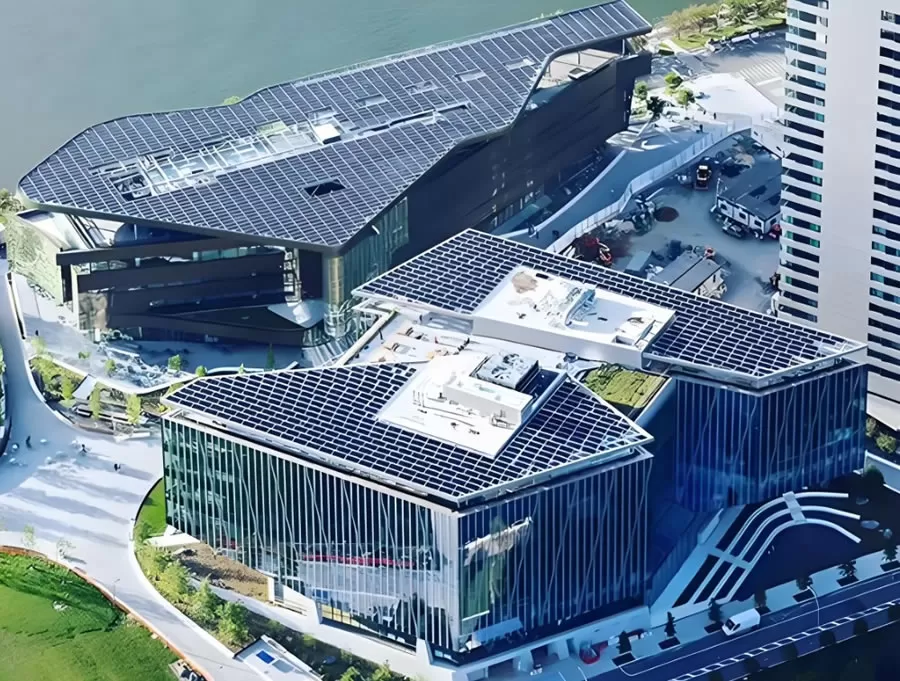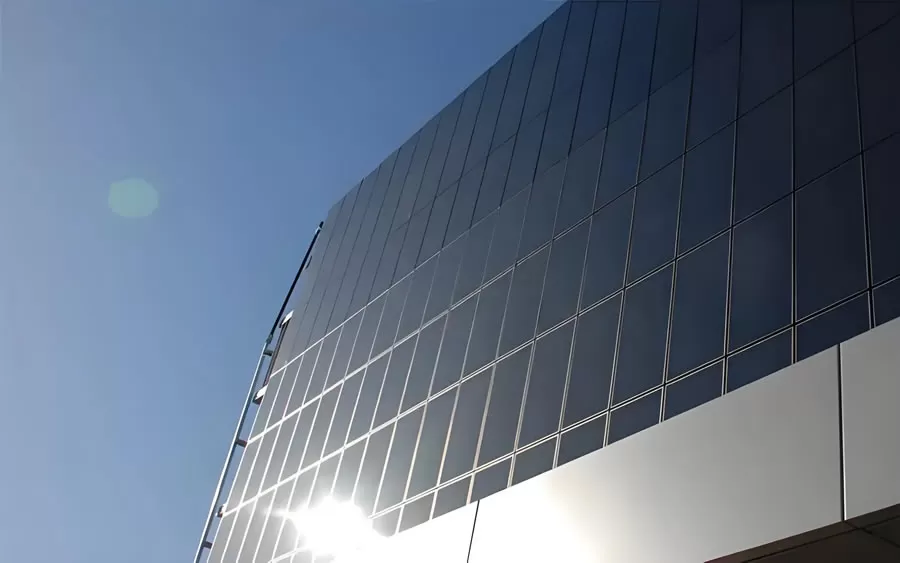
Against the backdrop of the global energy transition, the building industry is also actively seeking sustainable solutions. Building Integrated Photovoltaics (BIPV), as a combination of photovoltaic technology and buildings, is different from the traditional photovoltaic “add-on” installation. BIPV can realize clean power generation by replacing photovoltaic modules directly in the building envelope, which not only realizes self-sufficiency of energy, but also enhances the aesthetic effect of the building, making it an important innovation in modern building design. an important innovation in modern architectural design. Especially in commercial complexes, the application of BIPV is getting more and more attention and favor, Brice Solar will discuss the innovative application of BIPV in commercial complexes such as shopping malls, office buildings, government buildings and hospitals, taking into account the current technological advances in the solar PV market and actual cases, and show how it can improve the aesthetic value of the buildings while reducing energy consumption.
1. Shopping Malls: PV Curtain Walls Create “Zero-Carbon Commercial Landmarks
Case: BIPV Roof of Taikoo Li on the Bund, Shanghai
As the first large-scale commercial complex BIPV project in China, Taikoo Li on the Bund uses customized colored PV glass modules on the roof, which not only preserves the diamond-shaped geometric aesthetics of the building's original design, but also achieves an annual power generation of more than 450,000 kWh. The combination of photovoltaic tiles and daylighting skylights allows natural light and green energy to penetrate into the commercial space in tandem, with the overall energy saving rate of the project reaching 32%.
Technological breakthroughs:
Curved shaped module technology: adapting to the complex modeling needs of commercial buildings; and
Colorful thin film power generation glass: provide gray, blue and gold multi-color customization solutions; and
Intelligent operation and maintenance system: real-time monitoring of each module's power generation efficiency.
2. High-end office building: PV window and wall system reconstructs “green office ecology”.
Case: Shenzhen Hanjing Financial Center
This 316-meter-high super high-rise building uses CdTe thin-film photovoltaic (PV) glass on a large area of its façade, replacing traditional curtain wall materials. The installed capacity of the photovoltaic system reaches 1.2MW, and the annual power generation can cover 15% of the building's daily electricity consumption. The semi-transparent module reduces UV radiation by 70% while ensuring 20% light transmittance, significantly reducing the air-conditioning load.
Industry Trends:
According to the International Energy Agency (IEA), the kWh cost of BIPV curtain wall applied in office buildings has been reduced to 0.4 yuan/kWh, and the payback period has been shortened to 6-8 years. With the maturity of calcite technology, the future light transmittance adjustable, color customizable photovoltaic glass will become the standard for high-end office buildings.

3. Government buildings: exemplary green buildings
Case: Government buildings in California, USA
Many government buildings are becoming models of green buildings, realizing energy self-sufficiency through BIPV and demonstrating the concept of sustainable development. A government building in California, USA, fully utilizes BIPV technology. The photovoltaic system on the exterior walls, roof and windows not only solves the building's energy needs, but also enhances the building's appearance with a sense of technology and modernity. As a benchmark project, this government building provides an important reference for other buildings in the city and even the whole state, promoting the wide application of BIPV in public buildings.
4. Hospitals: New Green Health Concepts
Case: University Hospital Basel, Switzerland
Hospital buildings have equally high requirements for energy efficiency, especially in the case of high energy consumption, and BIPV technology provides an ideal solution. The University Hospital of Basel in Switzerland uses BIPV technology to provide clean energy for the hospital. The hospital's roof and window panes are integrated with photovoltaic modules, which not only provide the hospital with a stable power supply to support the operation of some low-energy-consuming equipment, but also improve the appearance of the hospital and enhance the concept of green health.
5. BIPV technology breakthroughs
The current BIPV technology has broken through three major bottlenecks, realizing from single power generation to multi-dimensional value creation:
Aesthetic integration: colored glaze, micro texture, gradient transmittance technology makes PV module become the art carrier of building skin.
Structural safety: double-glass modules with wind-pressure strength of 7200Pa meet the needs of high-rise buildings in typhoon areas.
Investment return: “self-generation and self-consumption + residual power on-grid” mode raises IRR to 12%-15%.
6.Advantages and Future Prospects of BIPV
BIPV, as an innovative application of solar photovoltaic (PV) technology, is continuously driving the transformation of the building industry. Unlike traditional photovoltaic power generation, BIPV not only plays the role of energy production, but also integrates perfectly with architectural design to enhance building appearance, extend building life, and bring lower operating costs to building users. We can see through actual cases that BIPV not only significantly reduces the energy consumption of commercial complexes, but also adds aesthetic value to the buildings and enhances social awareness of green buildings and sustainable development.
As photovoltaic technology continues to advance, BIPV will show its potential in more areas in the future. From shopping malls to office buildings, from government buildings to hospitals, the application of BIPV will undoubtedly become an important trend in the construction industry in the future. With increasing policy support and growing market demand, BIPV will play an increasingly important role in the future of buildings, driving the construction industry towards a greener and more sustainable future.
If you are also considering using BIPV in your shopping mall or office building, we have a wealth of experience in BIPV and provide you with a wealth of BIPV solutions.









One step to find us,we will respond within 24 hours.
More Contact Details
008613738639386
[email protected]